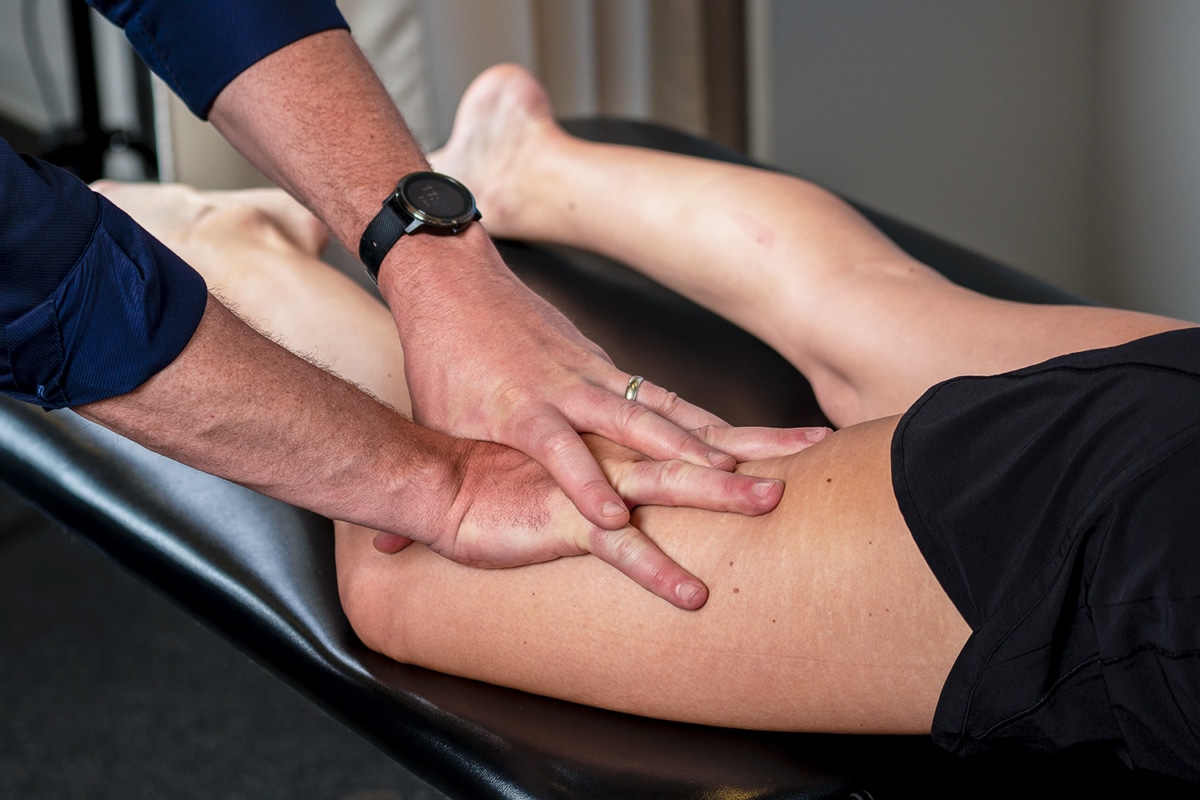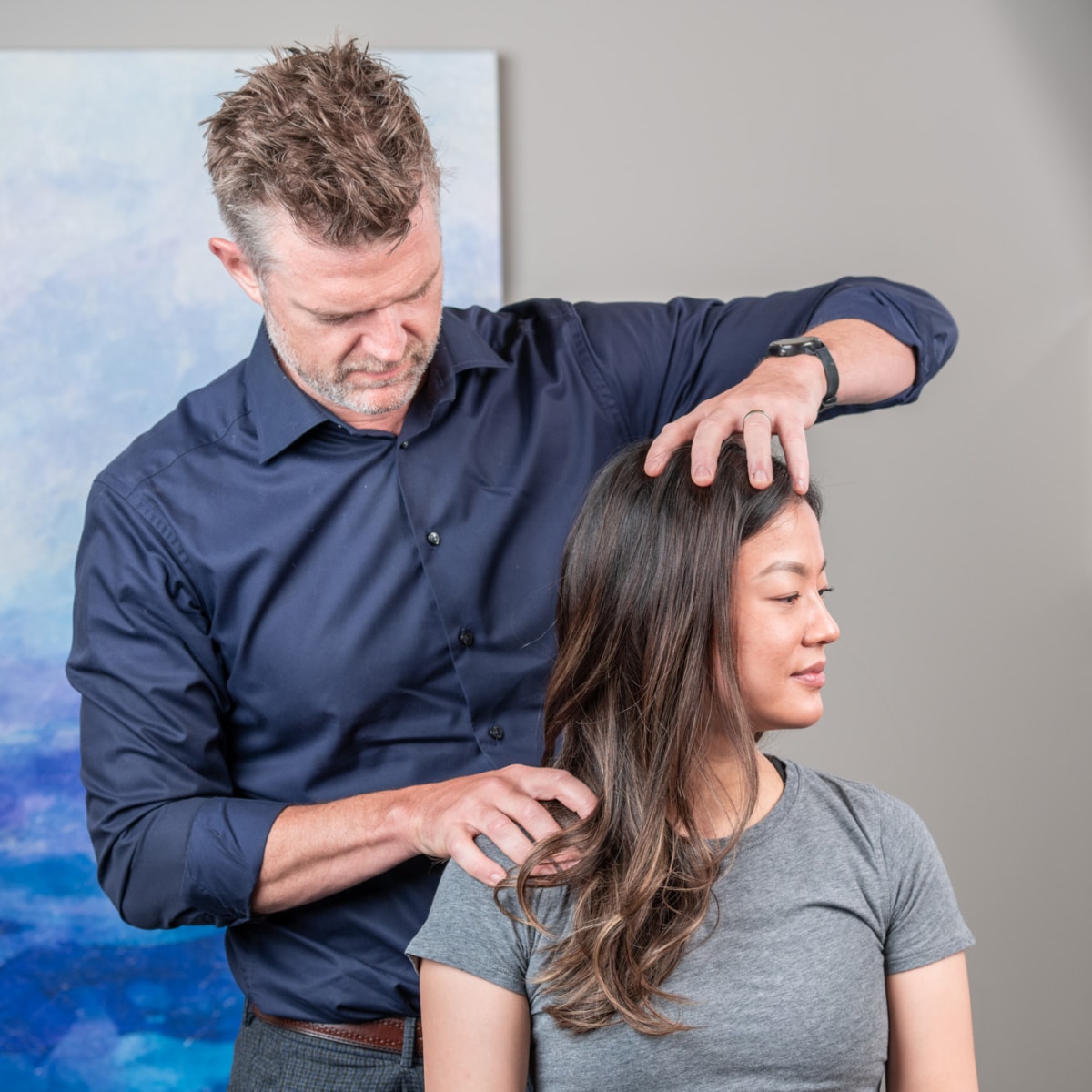

Massage and Soft Tissue Therapy
Reduce muscular tension and increase blood flow
At Calgary Core Physiotherapy, we do not have registered massage therapists at our clinic. As physiotherapists, we apply various advanced massage and soft tissue techniques to release, reduce stress, and promote healing in muscles and other soft tissues.

Why Soft Tissue Therapy?
Massage and Soft Tissue Therapy can be an invaluable addition to your care. Learn more about why:
Tissues are what make up the human body. Soft tissues include muscles, as well as ligaments, tendons, nerves, blood vessels, synovium (the tissue surrounding a joint) and fascia (the tissue surrounding a muscle).
In physiotherapy, a thorough orthopedic evaluation is initially performed to determine the diagnosis of an injury. That is, the bones, joints, and soft tissue structures are all evaluated to find out what tissue is at fault. This may require the physiotherapist to refer you for further diagnostic testing, such as an X-ray, ultrasound, or MRI. If the physiotherapist determines the muscle or soft tissue to be injured, and if deemed appropriate, then a massage or soft tissue technique may be applied as part of the physiotherapy treatment. The physiotherapist most likely will provide other treatments and therapies in a treatment session for optimal injury healing.
In massage therapy, varied techniques are used to relax muscle and encourage healing in soft tissue. Massage therapy can also provide overall stress reduction and relaxation. Registered massage therapists attend approved massage therapy schools and require a set number of hours of education. More information on registered massage therapists.
At Calgary Core Physiotherapy, we refer to a network of highly-experienced registered massage therapists throughout Calgary if we determine an injury would benefit from more massage therapy to complement their physiotherapy. We are also happy to communicate with your current registered massage therapist if you so desire.
No, you will not be able to claim your physiotherapy treatment as massage therapy. We are physiotherapists that incorporate massage into your treatment.
Physiotherapists attend one of 14 accredited universities across Canada to obtain a Master of Science Degree in Physiotherapy. Massage and soft tissue techniques are taught and evaluated as part of each core physiotherapy program. Physiotherapists are taught to critically evaluate the research in different therapies for injury treatment.
Physiotherapists also attend post-graduate level courses to learn more advanced massage and soft tissue techniques. At Calgary Core Physiotherapy, our physiotherapists are continually attending courses to update their skills.
Your physiotherapist will be able to determine if massage or soft tissue therapy would be effective based on your assessment and ongoing evaluation of your injury.
Oftentimes, one tissue that is injured can be causing another tissue to remain injured. Or there can be compensation because of the injury. For example, muscles around a joint may be tight or in spasm to try to protect an inflamed joint. Or vice versa, the muscle tightness may be putting too much stress and compression on the joint, causing the joint to be inflamed.
Physiotherapists are highly trained to evaluate and treat these problems. Many times, the physiotherapist may need to treat several different tissues and in different areas of your body.
- reduces muscular tension
- increases blood flow
- breaks down scar tissue
- improves the gliding of tissues against each other
- reduces pain and stiffness.
At Calgary Core Physiotherapy, our physiotherapists have many years of experience working with their hands. Some of the massage and soft tissue techniques that we may perform, depending on your injury, include:
- General massage techniques – gentle strokes and kneading of muscle tissue with a non-allergenic lotion used to relax muscle and fascia
- Deep tissue massage – slower and deeper strokes, focusing on adhesions in the deep layers of muscle and soft tissue
- Deep friction massage – a specific, concentrated massage to break up scar tissue adhesions
- Trigger point release – sustained pressure in the trigger point of a muscle, a taut band of muscular tightness
- Active soft tissue release – applying massage along a muscle while the patient moves a pre-determined direction
- Cupping – use of a suction cup to lift and move the skin and fascia overlying a muscle
- The Graston® Technique – use of stainless steel instruments to break up scar tissue adhesions

Ready to book? Or want to learn more?
You can call us at (403) 455-4010, or use the form below. We'll reply within 1-business day.
Your lasting recovery is our priority.
Let’s get you better:


